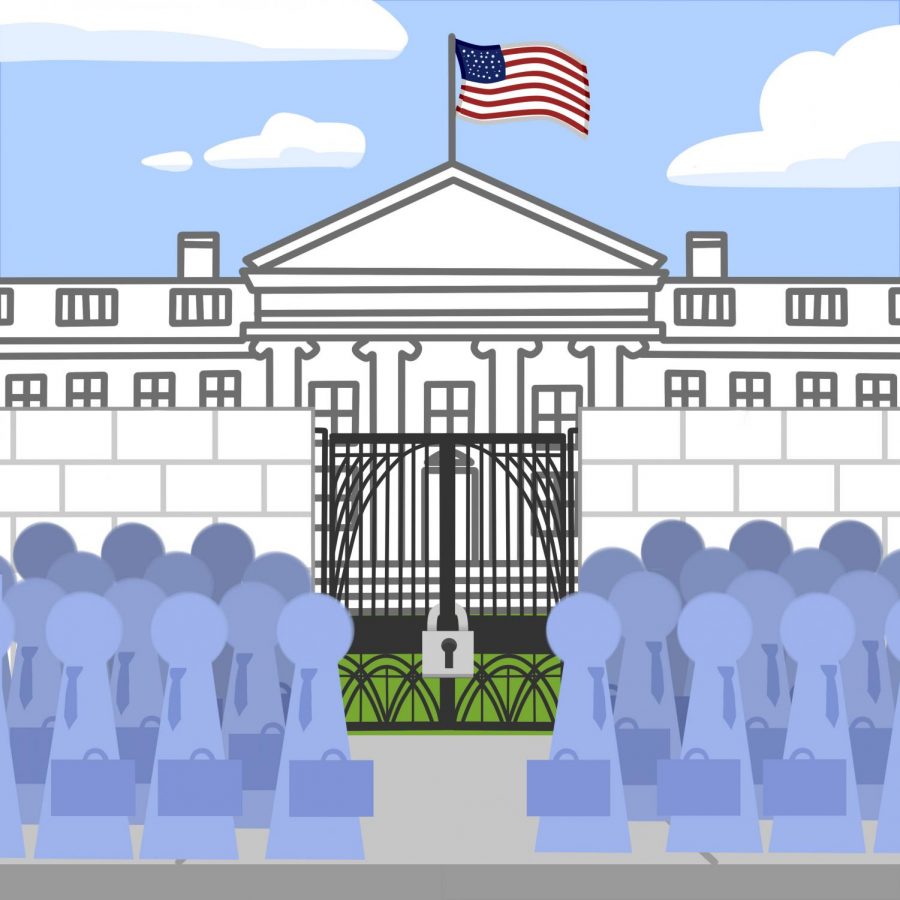The recent government shutdown broadcasts Trump’s apathy
February 15, 2019
In late December of 2018, President Trump and members of Congress came to a stalemate regarding the federal budget for 2019. According to Politico, in one 2019 budget, proposed by many Republicans of the Senate, $5.7 billion was allocated for Trump’s border wall. In another budget, proposed by Democrats, no funds were set aside for the wall. Both parties were initially unwilling to cave to the demands of the other.
Since no conclusion was passed by the Senate, discussions on the bill were essentially declared dilatory by previous acts of the US government and halted, causing the government to “shut down” at midnight EST on Dec. 22. The shutdown lasted for 35 days, the longest in US history. On Jan. 25, a bill drafted by members of Congress was passed by Trump, temporarily reopening the government for 21 days. If no conclusion is reached by Feb. 15, the government will shut down again.
Upon being elected into office, Trump boastfully promised supporters that he could somehow secure a physical blockade, often referred to as “the wall,” along the Mexico-US border. To build support for this plan, Trump has continually alluded to an “immigration crisis,” which, factually, does not seem to be a crisis at all. According to Pew Research Center, illegal immigration in the US has been declining since 2007. What’s more of a crisis is the lack of support at the border, both in personnel and resources. While legal requests for asylum are being processed, refugees are forced to live in inhumane conditions because materials are scarce in these processing centers. Border security remains understaffed and centers are not given enough resources to be in touch with other US forces, should they uncover an issue.
During the shutdown, the lives and realities of many working-class Americans were turned upside down. According to CNBC, a total of 420,000 agents from TSA, Customs and Border Protection, the US Forest Service, and even the FBI went to work without immediate pay during the shutdown. 380,000 other federal workers were placed on furlough, meaning that they were not permitted to work and thus did not receive pay during the shutdown.
Not only were the workers affected, but their dependents were as well. Take a glimpse into the hypothetical life of an entry-level government worker, living paycheck to paycheck, trying to provide for their children. Suddenly, there is no money for food, housing, transportation, or even education.
800,000 lives were used as collateral while our president whined for an arbitrary amount of funding, ignoring pleas from both parties to reopen the government. Trump experienced a large amount of adversity from his own Republican allies during the shutdown, who advised him to reopen the government for further discussion.
While President Trump eventually heeded his cohorts’ advice and reopened the government, the 35 days of closure revealed quite a bit about the priorities of our president. Trump was stubborn enough to disrupt the lives of hundreds of thousands of American citizens for a promise that, as Republican Senator Michael Bennet from Colorado stated on the Senate floor, “America is not interested in having him keep.”
420,000 paychecks were suspended and 380,000 jobs were held up for a month while members of Congress worked tirelessly to draft a compromise for one man to tolerate. President Trump sat idly by while his citizens suffered for a wall that the majority of taxpayers aren’t interested in paying for, emphasizing his personal agenda.










